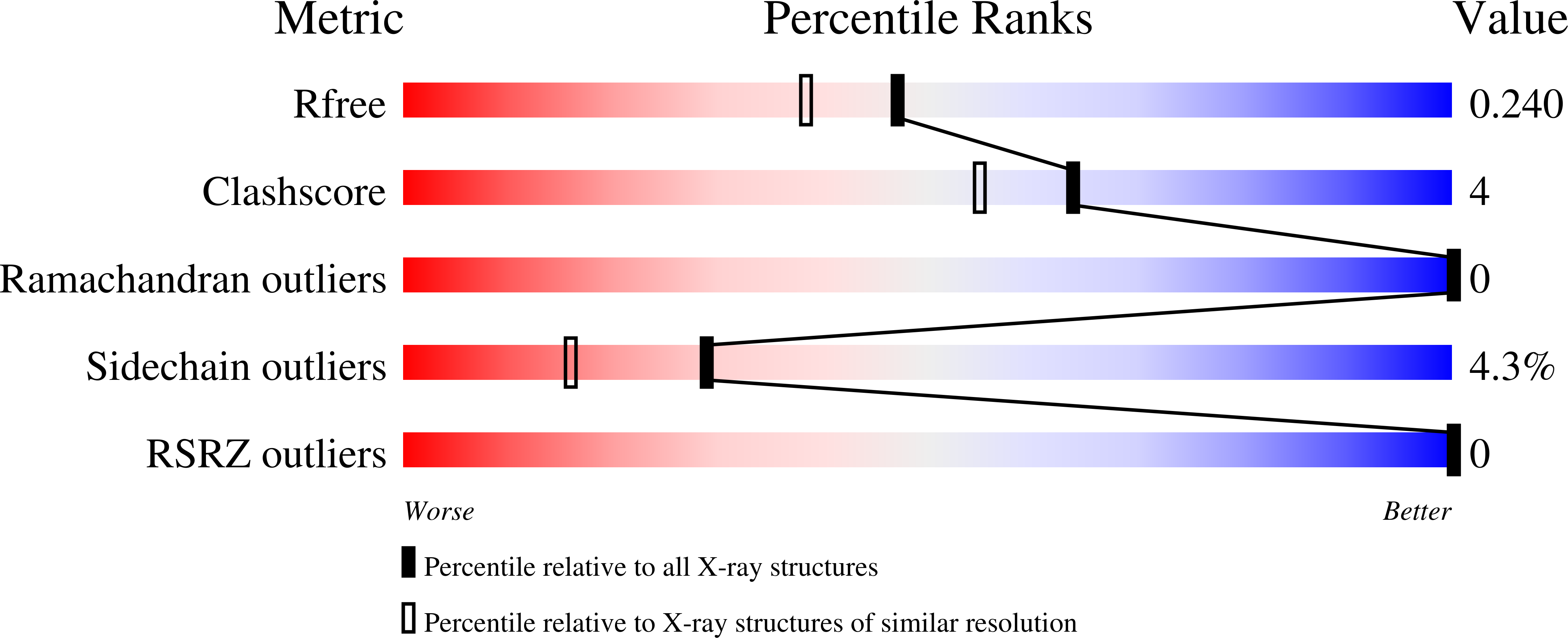
Deposition Date
2022-07-25
Release Date
2023-08-02
Last Version Date
2024-08-14
Entry Detail
PDB ID:
8DTD
Keywords:
Title:
Crystal Structure of FosB from Bacillus cereus with Zinc and Phosphonoformate
Biological Source:
Source Organism:
Bacillus cereus ATCC 10987 (Taxon ID: 222523)
Host Organism:
Method Details:
Experimental Method:
Resolution:
1.95 Å
R-Value Free:
0.22
R-Value Work:
0.18
R-Value Observed:
0.18
Space Group:
P 21 21 21


